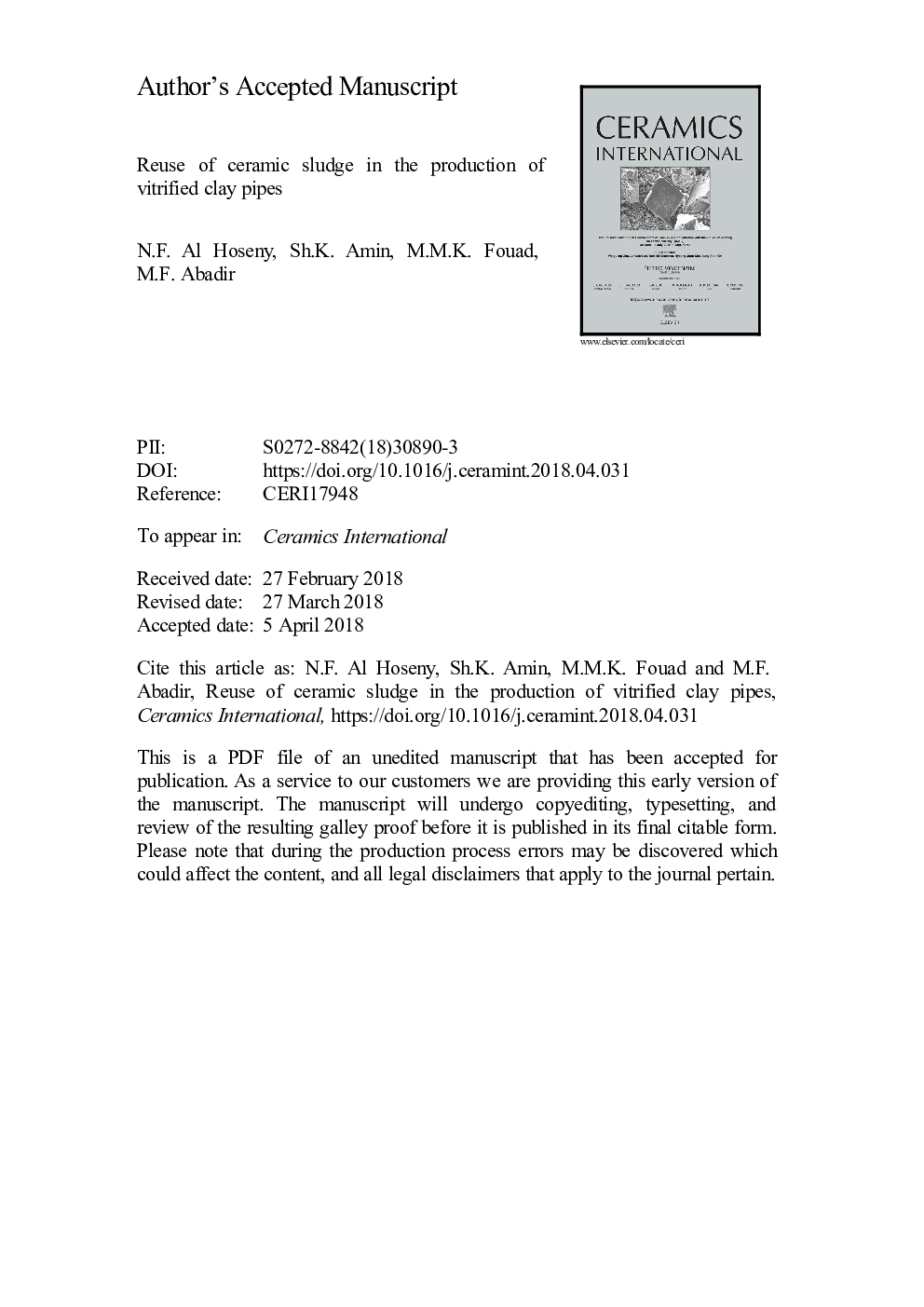| Article ID | Journal | Published Year | Pages | File Type |
|---|---|---|---|---|
| 7887000 | Ceramics International | 2018 | 14 Pages |
Abstract
The use of various wastes in the manufacture of different ceramic products has proved to be beneficial from both economic and environmental points of view. In the present paper, the simultaneous reuse of ceramic sludge waste (from 0% to 6.2%) and cullet (from 0% to 10%) in the production of vitrified clay pipes has been investigated. Samples were pressed at 15â¯MPa, dried and subsequently fired at three different temperatures (1050, 1150 and 1250â¯Â°C) and soaking times (1, 2 and 3â¯h). A two-level factorial design was applied to study the effect of the various parameters on the properties of fired bodies. It was concluded that an economic recipe can be prepared involving the use of 6.2% sludge (dry basis) and 5% cullet with the balance clay +â¯grog followed by firing the dried body at 1050â¯Â°C for one hour only. The produced fired specimens yielded bending strength exceeding the minimum requirement for any size of soil embedded pipes and for 8â³ and larger concrete cradled pipes. The suggested composition makes use of an environmentally polluting waste (sludge) and broken glass waste (cullet) and involves firing for one single hour at a temperature about 200â¯Â°C lower than commonly used.
Keywords
Related Topics
Physical Sciences and Engineering
Materials Science
Ceramics and Composites
Authors
N.F. Al Hoseny, Sh.K. Amin, M.M.K. Fouad, M.F. Abadir,
